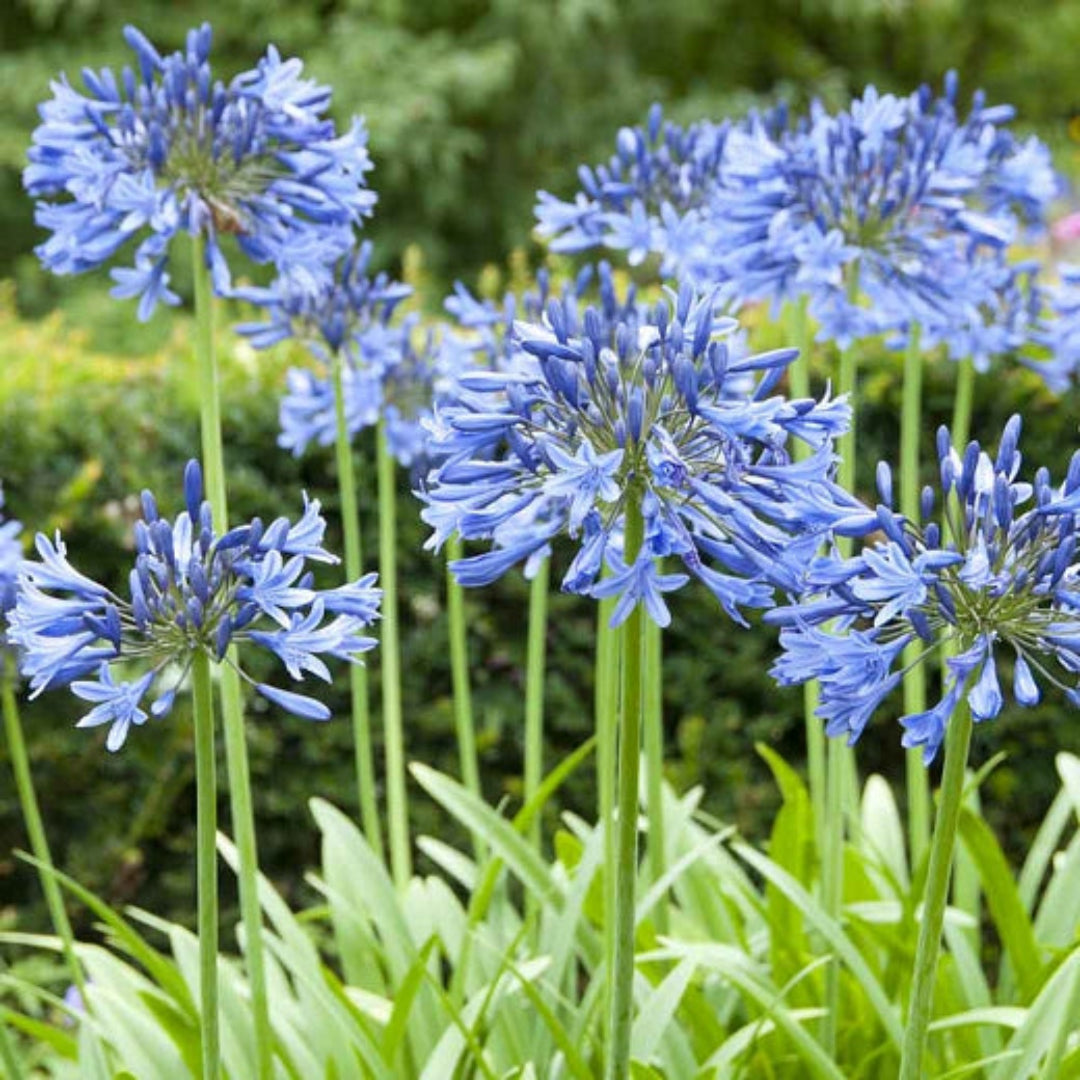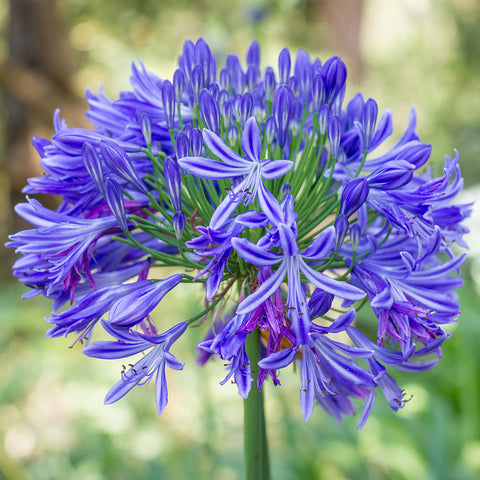How to Plant and Maintain Agapanthus in Your Yard
How to Plant and Maintain Agapanthus in Your Yard
Blog Article
Releasing the Secret to Successful Agapanthus Cultivation: Idea for a Flourishing Yard
In the realm of horticulture, cultivating agapanthus effectively requires a calculated approach that incorporates various elements of plant care. By comprehending the nuances of agapanthus growing, one can develop an atmosphere where these plants grow and bloom perfectly.
Planting Agapanthus: Best Practices
When planting Agapanthus, appropriate soil preparation is essential for guaranteeing effective growth and development of these beautiful blossoms. Agapanthus, commonly referred to as Lily of the Nile or African lily, prospers in well-draining soil with a somewhat acidic to neutral pH level - Agapanthus. Prior to growing, it is essential to change hefty clay soils with organic issue such as garden compost or peat moss to improve drainage and supply essential nutrients for the plants
To plant Agapanthus, select an area that obtains full sunlight to partial shade, as this will advertise healthy and balanced growth and bountiful flowering. Dig a hole twice the diameter of the plant's root sphere and position the Agapanthus at the very same deepness it was previously growing. Gently backfill the hole with soil, weighing down securely to eliminate any kind of air pockets around the origins.
Water the freshly grown Agapanthus extensively and continue to keep the soil evenly moist, especially during the plant's active growing period. Agapanthus. Using a well balanced plant food once a month can further support the plant's development and blooming. By complying with these ideal techniques for growing Agapanthus, you can develop a magnificent display of these fascinating blossoms in your yard
Perfect Soil Conditions for Agapanthus
For optimum growth and growing success of Agapanthus plants, ensuring the dirt problems are excellent is important. Agapanthus chooses dirt that is rich in nutrients, so incorporating a well balanced fertilizer throughout the growing season can advertise healthy development and dynamic blossoms.

Watering and Feeding Tips
To make certain healthy and balanced development and vivid blossoms, correct watering and feeding strategies are essential for successful Agapanthus farming. Agapanthus plants take advantage of normal watering, especially throughout the expanding season. It is suggested to water deeply once a week, guaranteeing the soil is wet yet not saturated. Throughout heat or in pots, more regular watering may be necessary to avoid the dirt from drying totally.
When it comes to fertilizing Agapanthus, a balanced fertilizer with equal components nitrogen, phosphorus, and potassium can be applied in the spring to advertise healthy development and flowering. Slow-release fertilizers are ideal for giving nutrients slowly over a prolonged period. Stay clear of over-fertilizing, as this can cause excessive foliage development at the cost of flowers.
Furthermore, including organic matter like garden compost into the dirt can improve nutrient levels and boost soil framework, helping in the overall wellness of the Agapanthus plants. By complying with these watering and fertilizing ideas, gardeners can guarantee their Agapanthus plants flourish and produce find sensational displays of blossoms.
Pruning and Deadheading Strategies
Proper trimming and deadheading techniques play a crucial function in maintaining the health and wellness and visual appeals of Agapanthus plants, enhancing the vital techniques of watering and fertilizing for effective cultivation. Pruning Agapanthus entails eliminating invested blossom heads, yellowing or dead fallen leaves, and overall shaping of the plant to promote far better growth. Deadheading, the process of removing discolored blossoms, not only improves the plant's appearance but likewise urges further flowering.
When deadheading Agapanthus, it is a good idea to clip off the blossom stem at the base using sharp, clean shears. This process redirects the plant's energy from seed production back into root and foliage development, advertising a much healthier and more robust plant. Routine deadheading can expand the blooming period of Agapanthus and stop self-seeding, which can cause congestion.
In regards to trimming, Agapanthus generally gain from a light see post trim after blooming to clean up the plant and encourage fresh development. Reducing the invested blossom stems and eliminating any type of dead or damaged vegetation helps maintain the plant's vitality and total look. Nevertheless, it is important to avoid reducing right into the crown of the plant, as this can weaken its health and wellness.

Protecting Agapanthus From Pests and Diseases
Applying efficient bug and disease management approaches is vital to securing the health and wellness and vitality of Agapanthus plants in cultivation. Agapanthus are usually sturdy plants, but they can still succumb numerous insects and diseases otherwise correctly cared for. One typical insect that influences Agapanthus is the Agapanthus borer, a caterpillar that passages into the plant, triggering damage to the fallen leaves and blossoms. To stop infestations, normal assessment of the plants is important. If borers are identified, they can be manually gotten rid of, or insecticidal soap can be utilized as a control action.
In addition to insects, Agapanthus are at risk to diseases such as root rot and fungal fallen leave spots. These issues can commonly be prevented by making certain proper drain and preventing overwatering. If indicators of condition appear, affected parts of the plant must be promptly removed to avoid more spread. Fungicides may additionally be made use of as a treatment measure, complying with the supplier's guidelines meticulously. By remaining vigilant and dealing with insect and illness problems quickly, gardeners can assist their Agapanthus grow and prosper.

Final Thought
Finally, effective growing of agapanthus calls for appropriate growing techniques, ideal soil conditions, sufficient watering and fertilizing, routine pruning and deadheading, and security from conditions and insects. By adhering to these suggestions and methods, garden enthusiasts can ensure a growing yard full of lovely agapanthus blossoms. Agapanthus. Remember to maintain consistent care and interest to detail to promote the health and wellness and long life of these stunning plants
When planting Agapanthus, appropriate dirt prep work is important for making sure effective development and development of these stunning blossoms.Water the freshly planted Agapanthus completely and proceed to keep the soil uniformly wet, specifically throughout the plant's energetic growing season.For optimum development and blooming success of Agapanthus plants, making sure the dirt problems are ideal is essential. When hair transplanting or growing Agapanthus, make certain the soil is well-prepared to offer the needed website here structure for the plants to develop themselves successfully. One typical insect that impacts Agapanthus is the Agapanthus borer, a caterpillar that tunnels into the plant, causing damage to the flowers and leaves.
Report this page